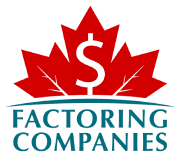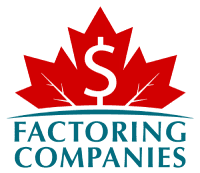
Every business owner reaches a moment when opportunity knocks louder than current resources allow. Whether you answer it and the approach you choose, shape the future of your business and who controls it. Equity funding can be a valuable tool in these situations, but for many business owners, giving up any control of their company is unfathomable. If that sounds like you, take heart. There are many ways to obtain business growth financing without equity loss. We’ll walk you through the different funding types and options in each category below.
Zero in on Cash Flow Management
When you are planning for growth, your best first move is to look inward at how money flows through your business today. If you can optimize cash flow, you might not need to seek outside funding at all, or you might need far less of it. This protects your ownership stake, keeps your business flexible, and strengthens your overall financial health.
Speed Up Customer Payments
Tighten your invoicing processes and follow up quickly on overdue accounts. Consider offering small discounts for early payment. For example, providing a two percent discount if paid within ten days is a common tactic.
Extend Payables Without Penalties
Work with your suppliers to negotiate longer payment terms where possible. Moving from net-30 to net-45 or even net-60 terms gives you more breathing room without needing to borrow money.
Avoid Excess Stock
Inventory ties up cash that could be used elsewhere. Focus on just-in-time inventory practices or implement inventory management software that helps you forecast needs more accurately.
Cut Non-Essential Spending
Review every major cost centre and identify areas where you can reduce waste without hurting operations. Even minor cuts, like switching vendors or renegotiating service contracts, can compound into major savings over a year.
Set Aside a Growth Fund
If your cash flow improvements start freeing up money, do not spend it immediately. Create a separate account earmarked for growth initiatives so that you are ready to fund opportunities without needing to borrow.
Look into Grants and Government Incentive Programs
Tapping into government funding can be one of the smartest ways to finance your business growth without giving up equity or taking on debt. There is a range of grants and incentive programs across Canada designed to support businesses at every stage.
Business Grants
Grants provide money that your business does not need to repay, making them an ideal form of growth capital. The CanExport SMEs program is one example. It provides up to $50,000 to help small and medium-sized enterprises explore new international markets.
Unfortunately, many government grant programs for businesses have been shut down or are indefinitely paused due to funding concerns, so opportunities are limited. Moreover, many businesses don’t qualify for grants due to strict eligibility requirements and reporting obligations.
Government Incentive Programs
In addition to grants, Canadian businesses can also benefit from a variety of government incentive programs. These may offer tax credits, low-interest loans, or conditional funding that only needs to be repaid if certain conditions are met.
For instance, one of Canada’s largest incentive programs is the Scientific Research and Experimental Development (SR&ED) Program. Through SR&ED tax incentives, businesses conducting eligible research and development activities can qualify for deductions and earn an investment tax credit (ITC).
Leverage Traditional Financing Options

When internal cash flow improvements and grant funding are not enough to fully support your growth plans, many businesses turn to traditional financing. Borrowing through established financial institutions provides access to larger sums of capital, but it also comes with obligations that can impact your business operations and financial flexibility.
Bank Loan
Bank loans are a common choice for businesses planning major investments like equipment purchases, facility expansions, or product development. Many big banks throughout the country offer a variety of loan products geared toward small and medium-sized enterprises.
While interest rates can be competitive, particularly for businesses with strong credit and collateral, it is important to weigh the risks carefully. Loan payments are fixed and must be made regardless of how your business is performing. Missing payments can impact your credit rating and your ability to borrow again later. Moreover, many businesses are denied loans or don’t receive the level of funding they need through them. Because of this, you’ll likely need a backup source of funding if you’re considering a bank loan.
Line of Credit
A business line of credit provides access to a pre-approved pool of funds that you can draw from as needed. You only pay interest on the amount you use, making it a flexible tool for managing cash flow fluctuations, funding inventory purchases, or handling unexpected expenses.
Lines of credit often require a strong credit profile and, sometimes, collateral. Interest rates are usually variable, meaning your cost of borrowing could increase over time if market rates rise.
Equipment Financing
Businesses that want to acquire needed machinery, vehicles, or technology without paying the full cost upfront can leverage equipment financing. The asset itself often serves as collateral, making it easier to qualify even if your credit history is limited.
This can be a practical solution for industries like manufacturing, transportation, and construction, where growth requires ongoing investment in physical assets.
Explore Alternative Funding Options

Sometimes, traditional financing options are either too rigid or too slow to meet the needs of a growing business. Alternative funding solutions offer faster access to capital, more flexibility, and fewer restrictions, making them an attractive choice for businesses that want to maintain momentum without giving up ownership.
Asset-Based Lending
With asset-based lending (ABL), your business can borrow against the value of its assets, such as accounts receivable, inventory, equipment, or real estate. Unlike a traditional loan, the amount you can borrow fluctuates based on the value of your collateral.
ABL is often used by businesses that are growing quickly but do not have the financial ratios required for standard loans. However, ABL agreements can be complex, and it is important to work with lenders who understand your industry and can structure terms that support, rather than restrict, your operations.
Merchant Cash Advance
With a merchant cash advance (MCA), a lender provides a lump sum payment upfront in exchange for a portion of your future credit card or debit card sales. Repayment is typically structured as a daily or weekly deduction from your sales receipts.
While MCAs offer speed and convenience, they are generally much more expensive than other forms of financing. Many businesses that take MCAs find themselves in a cycle of renewing advances, which can strain cash flow over time. This makes them a tool to use carefully and typically only for short-term, high-return opportunities.
Revenue-Based Financing
Revenue-based financing (RBF) involves receiving an upfront capital injection in exchange for an agreed-upon percentage of your monthly revenues until a set repayment amount is reached.
This model provides flexibility because payments rise and fall with your business’s income. It is particularly popular among fast-growing companies in the tech, e-commerce, and subscription-based industries. However, because repayments are tied to gross revenue, not profit, it is important to forecast carefully to ensure you can comfortably meet obligations even during leaner months.
Invoice Factoring
With invoice factoring, also called receivables factoring, your business sells its unpaid B2B invoices to a factoring company in exchange for immediate working capital. Rather than waiting up to 90 days for customers to pay, you can access most of the invoice value right away, usually within 24 hours of approval.
There are many ways factoring supports growing SMEs. Because the cash can be used in whatever way is best for the business, it can support business expansion, cover payroll, address overhead and supply costs, and more. Plus, factors collect invoice balances for you, which saves considerable time, and they also run credit checks on your customers for you, to help ensure all balances are collected in full. Many offer additional types of funding, too, and specialized programs for key industries like trucking, staffing, manufacturing, and healthcare, allowing for more personalised service and tools to help your business grow.
Finance Your Business Growth Without Equity Loss Through Factoring
Not only does factoring provide capital for growth without diluting your equity, but it also does so without adding debt to your balance sheet. Plus, it’s something you can tap into as needed—you don’t have to commit to factoring all your invoices, and many factors don’t require long-term contracts. If you’d like to explore how factoring fits into your business growth strategy, request a complimentary rate quote.
FAQs on Business Growth Financing Without Equity Loss
What are the best ways to fund business expansion without investors?
The best ways include optimizing cash flow, accessing government grants and incentives, applying for bank loans or lines of credit, and using tools like factoring or asset-based lending. These methods give you the resources you need without involving outside investors or diluting your ownership.
Can I grow my business without selling equity?
Yes, you can. Many businesses grow successfully without selling equity by strengthening cash flow, securing financing through lenders, using grant programs, or leveraging assets. Careful planning and choosing the right funding solutions allow you to expand while maintaining full control of your company.
How to raise money for business growth without losing control?
To raise money without losing control, focus on internal funding improvements, government support programs, traditional loans, or flexible alternatives like invoice factoring. Each of these options provides capital based on your business’s strength, not your ownership stake, so you can keep building your company your way.
What are alternatives to equity financing for business growth?
Alternatives include traditional loans, lines of credit, equipment financing, grants, government incentives, asset-based lending, merchant cash advances, and factoring. Each option offers access to capital without requiring you to give up shares or board seats, allowing you to maintain full decision-making authority.
Is debt financing better than equity financing for growth?
Debt financing keeps ownership in your hands but requires regular repayment, even during slow periods. Equity financing provides capital without repayment pressure but reduces your control. Many owners prefer debt or flexible funding alternatives if they want to grow without giving up decision-making power.
How do I keep full ownership while growing my business?
You can keep full ownership by funding growth through cash flow improvements, loans, grants, incentive programs, or alternative financing like factoring. These approaches give you the capital needed to expand while allowing you to avoid taking on partners or investors who would dilute your ownership.
How can I increase cash flow for business expansion?
To increase cash flow, speed up customer payments, negotiate better supplier terms, manage inventory carefully, cut unnecessary expenses, and build a cash reserve. Strengthening cash flow gives you more flexibility to fund growth from within, reducing your reliance on outside financing altogether.
Are there government programs to help businesses grow without investors?
Yes, there are government programs to help businesses grow at both a federal and provincial level. However, competition is fierce for them, and most businesses will need a backup source of funding, even if a grant is secured.
How can I finance my business without taking on partners?
You can finance your business through traditional bank loans, government grants and incentives, revenue-based financing, invoice factoring, or asset-based lending. These methods provide the working capital you need while allowing you to remain the sole decision-maker and keep your company fully in your hands.

About Factoring Companies Canada
Related Insights
Get an instant factoring estimate
Factoring results estimation is based on the total dollar value of your invoices.
The actual rates may differ.
CLAIM YOUR FREE FACTORING QUOTE TODAY!
PREFER TO TALK?
You can reach us at
1-866-477-1778
Get an instant factoring estimate
Factoring results estimation is based on the total dollar value of your invoices.
The actual rates may differ.
CLAIM YOUR FREE FACTORING QUOTE TODAY!
PREFER TO TALK? You can reach us at 1-866-477-1778











